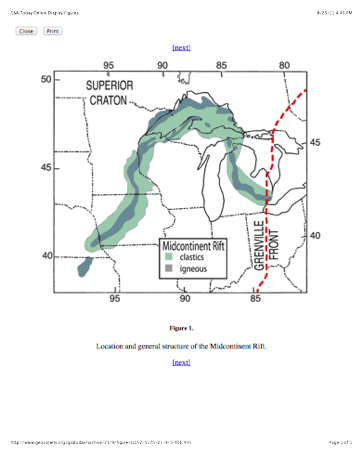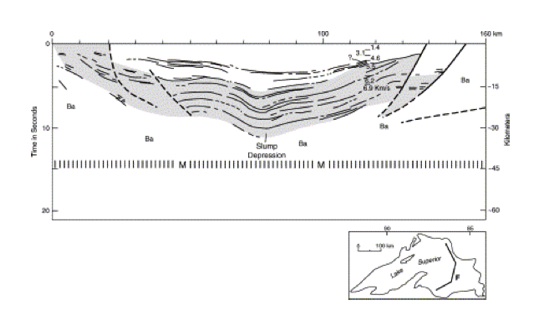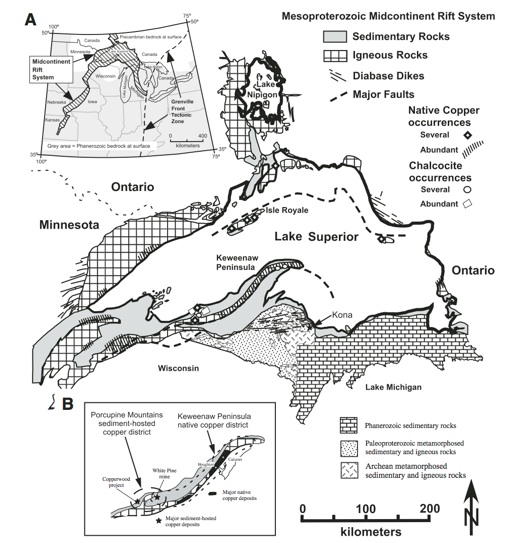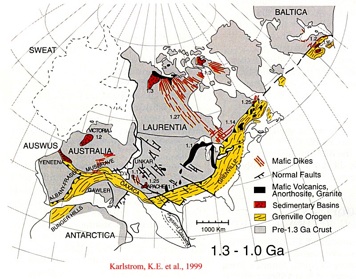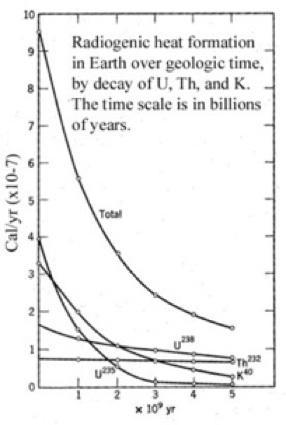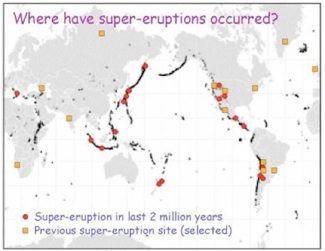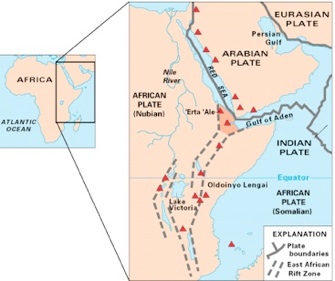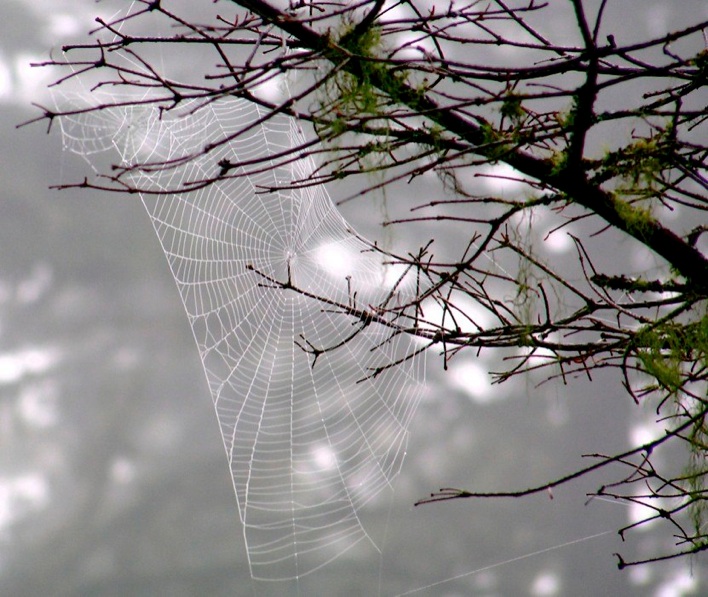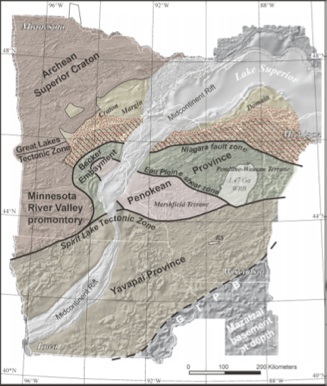Any individual place on Earth exhibits only tiny windows of Earth history. In the Keweenaw and Isle Royale, we can see into events that range from about 1.2 billion years ago until perhaps about 0.9 billion (Davis and Paces, 1990), and we can also see the deposits of the glacial periods of the last few million years. To see the record of other times we must travel to where we can see rocks of those ages are at the surface.
This is the very best place to see the exposed rocks of the midcontinent rift (left). This rift extended from at least Kansas to Detroit, but it is exposed only near Lake Superior. At the time of rifting there were huge differences in the configuration of the continents and a huge supercontinent, Rodinia, was assembled, a hodgepodge of pieces of what is now North America, Antarctica, Europe and South America. And it was beginning to break up.
In the Keweenaw we get a remarkable opportunity to look at rocks produced during the rifting period of Rodinia, which preceded the orogens shown in green in Figure 5. The orogens mark the areas where continental blocks approached each other at about 1.1 by ago. The orogeny in eastern North America, which eventually ended the Keweenaw Rifting episode, produced an orogen known as the Grenville Front. (Cannon, 1994).


